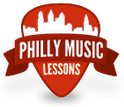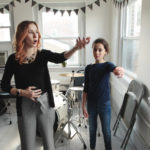
Visualization in Music Practice
Let’s do a little experiment. Sit down and close your eyes. Now I want you to think of the hardest piece of music you know. When you are ready, play through that piece in your mind as fast as you can. When you make a mistake, raise your hand and stop. How far did you get? If you are like most people, including myself, you didn’t get very far at all. Possibly a few phrases, but most likely only a couple measures.
This exercise, which was shown to me by the electric bass virtuoso Gerald Veasley, illustrates an intriguing point. Let’s think about this. The mistake that happened, which is a mirror of what happens with your instrument, happened without the instrument being present or you playing it. The mistake actually happened in your mind.
We often think that when we can’t play a musical passage, it is because we cannot play our instrument, a physical problem. However, this exercise suggests that the problem may not be physical. Rather, an internal block is just as debilitating as an external one.
So what can we do about this?
The answer is visualization. When confronted with a passage that is difficult or has been giving you trouble for a long time. Take some time to sit with your eyes closed, away from your instrument and think your way through the passage. Very slowly at first, and increasingly faster. Try pantomime the movements on your instrument. Then play it on your instrument.
You will be surprised at how effective this can be. It has been my experience that more often than not one of two things happen. 1) The problem magically disappears or 2) The cause of the problem is revealed. The second outcome is extremely important. It is very easy to be stuck in a blindspot and visualization can help give you a better perspective on the issue. Also, once you are aware of the real problem, you can take steps to fix it.
Another great use of visualization is for preparing for a performance.
Before your next performance use visualization as a test to make sure the music you have prepared is ready. If you can think your way through the music you are in good shape. Next, spend some time visualizing yourself at the performance on stage. If you are unfamiliar with the place you are to perform, go there ahead of time. The goal is to make your visualizations as realistic as possible. How will you feel on stage? How bright will the lights be? What will the audience’s applause sound like? How will you feel after the performance?
The technique of visualization is used by many high level performers in a variety of fields. From professional athletes, CEO’s, as well as performing artists. Make no mistake, it is not a substitute for regular and focused practice. Rather, in combination with regular, focused practice, it has the capacity to greatly increase your confidence, skills, and results.
Nicholas Krolak
I teach Upright Bass and Electric Bass. I received my B.A. in Jazz Performance from Moravian College in 2008, and I am currently in the Jazz Studies Masters Program at Temple University. I have toured extensively with The Glenn Miller Orchestra, Jessi Teich, The Frank Giasullo/Art Themen Quartet, and My Son Bison. As a teacher, I am able to teach any style while cultivating strong fundamentals.


